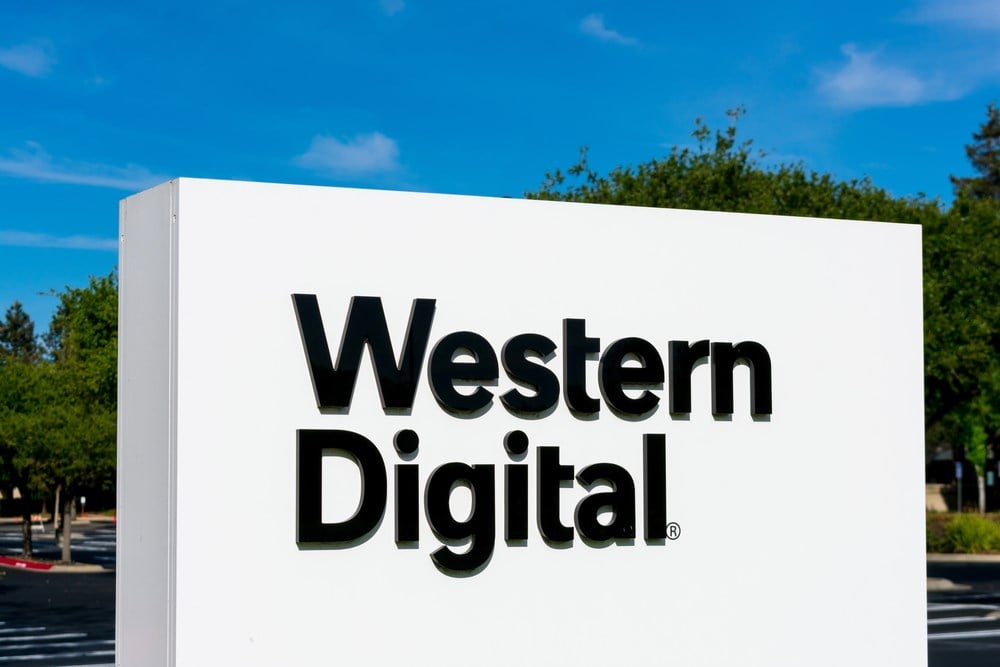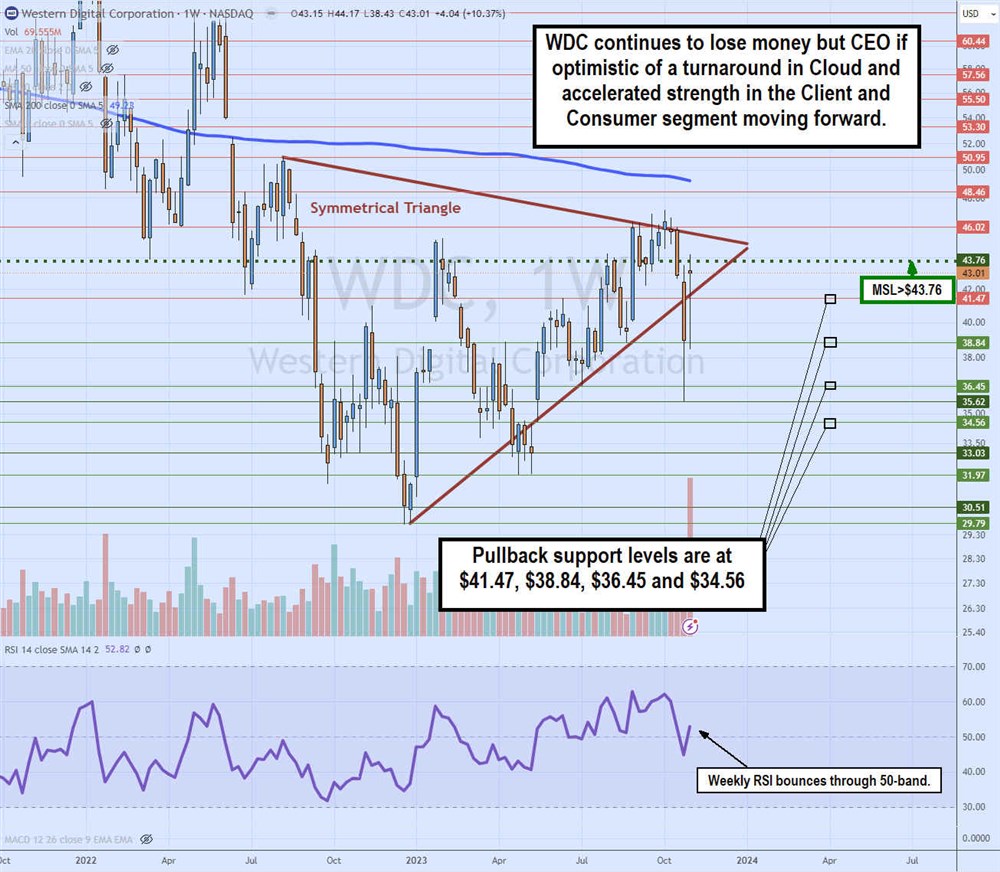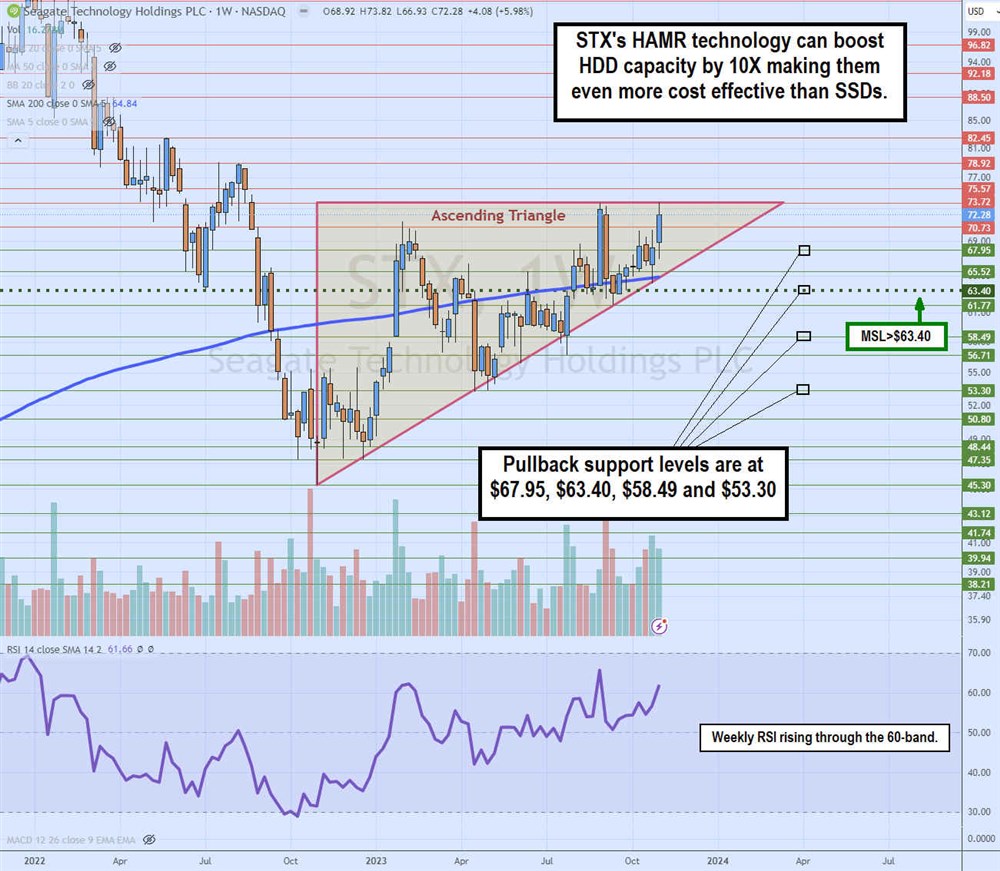
Data is generated every second around the clock. Oceans and oceans of data are all around us. That data has to be stored somewhere to be analyzed and used for whatever purposes. The viral adoption of artificial intelligence (AI) applications has accelerated the demand for storage. That's where these two stocks come into play.
They are two of the largest producers of consumer data storage devices, controlling an 80% market share of the legacy hard disk drives (HDD) market. The shift has been to adapt solid-state drives (SSD) to utilize non-moving parts and flash memory.
SSD superiority over HDD
SSDs are faster, more energy efficient and more reliable than HDDs, but at a higher price point. However, prices for SSDs are dropping, which is putting more pressure on HDD sales. One is pursuing an aggressive push into SSD technology, and the other has a conservative approach, looking to dominate a legacy technology but winning more market share. Both companies are trying to recover from normalization and losing money. Here's an analysis of the better investment in the long run.
Western Digital Co. (NYSE: WDC)
This legacy HDD maker saw the future in flash memory, prompting it to acquire leading flash storage maker SanDisk in October 2015 for $19 billion. Western Digital has a more diverse strategy of aggressively pursuing growth in flash storage with new products in the SSD and cloud storage solutions segment. Western Digital has an arguably more aggressive growth strategy, with SSD forming partnerships and joint ventures.
Flash Ventures
Flash Ventures is a JV owned 49.9% by Western Digital and 50.1% by Kioxia. Kioxia is a Japanese multinational computer memory manufacturer based in Tokyo, Japan. It was spun off from Toshiba in June 2018 as Toshiba Memory Corporation. Flash Ventures owns and leases equipment for flash wafer production. Kioxia was in merger talks with Western Digital, but they were dropped after its largest shareholders, SK Hynix and Bain Capital, shot down the idea. Merger attempts were discussed as early as 2021 but got stalled.
It purchases wafers from Kioxia at a cost under foundry agreements. It sells them to Western Digital and Kioxia at cost with a small markup while charging expenses to both companies. Both Western Digital and Kioxia provide R&D and manufacturing while paying Flash Ventures expenses while purchasing the wafers and provide funding for Flash Ventures equipment purchases. Flash Ventures repays the loans for equipment purchases from operating cash flow.
Weak cloud but strengthening client and consumer revenues
On Oct. 30, 2023, Western Digital reported its fiscal Q1 2024 earnings for the quarter ending September 2023. The company reported a non-GAAP EPS loss of $1.76, beating consensus analyst estimates for a loss of $1.91 by 15 cents. This included $225 million of underutilization-related charges in Flash and HDD of $225 million. This charge is usually a result of soft demand, economic downturn and increased competition. HDD revenue declined due to lower exabyte shipments and weaker China recovery.
Revenues fell 26.4% YoY to $ 2.75 billion, beating analyst estimates of $2.66 billion. Cloud revenue decreased 12% QoQ, which parallels the softness Alphabet Inc. (NASDAQ: GOOGL) reported for its Google Cloud QoQ revenue deceleration from 28% to 21%. Client revenue rose 11% QoQ. Consumer revenue rose 14% QoQ. However, the company sees it as a turning point for Cloud. Flash revenues increased sequentially, led by record exabyte shipments and continued content growth in the Client and Consumer end markets, including retail products and business-critical (BC) products.
Has Cloud decline bottomed? CEO thinks so.
Western Digital CEO David Goeckeler addressed Cloud when he commented, “Our Consumer and Client-end markets continue to perform well, and we now expect our Cloud end market to grow going forward. Our improved cost structure positions Western Digital to capitalize on enhanced earnings power as market conditions continue to improve.”
Separating flash and HDD businesses
Western Digital will split its HDD and Flash business into separate and independent public companies. The separation enables each company to pursue better innovative technology and product development, operating more efficiently with distinct capital structures. It's expected to be a tax-free transaction targeted for the second half of the calendar year 2024. This is another win for activist investment firm Elliott Management, who first proposed a separation in May 2022 upon taking a stake in Western Digital.
CEO Goeckeler also commented, "Our HDD and Flash businesses are both well positioned to capitalize on the data storage industry's significant market dynamics, and as separate companies, each will have the strategic focus and resources to pursue opportunities in their respective markets. Importantly, separating these franchises will unlock significant value for Western Digital shareholders, allowing them to participate in the upside of two industry leaders with distinct growth and investment profiles." This announcement is what likely caused the share to gap up.
Optimistic expectations for fiscal Q2 2024
Western Digital expected fiscal Q2 2024 EPS losses in the $1.35 to $1.05 versus $1.39 consensus analyst estimates. Revenues are expected between $2.85 billion to $3.05 billion versus $2.93 billion analyst estimates. HDD's seasonal demand is expected to improve in the consumer end market to drive sequential growth. Lower value-based pricing efforts and underutilization charges will lead to sequential revenue and gross margin improvements in the quarter and throughout fiscal 2024.
Analyst Actions
On Oct. 30, 2023, Summit Insights upgraded shares of Western Digital to a Buy from Hold. On Oct. 31, 2023, Fox Advisors upgraded shares of Western Digital to Overweight from Equal Weight with a $52 price target. On Nov. 1, 2023, Western Digital upsized its convertible senior notes due in 2028, offering $1.4 billion, up from $1.3 billion announced on the previous day.
Western Digital analyst ratings and price targets are at MarketBeat. Western Digital peers and competitor stocks can be found with the MarketBeat stock screener.

Weekly Symmetrical Triangle
The weekly candlestick chart on WDC illustrates a symmetrical triangle pattern. The descending trendline commenced in August 2022 after peaking at $50.95 as shares fell to a low of $29.79 by December 2022. The ascending trendline formed from the low of $29.79, rising towards the apex point.
The weekly market structure low (MSL) was triggered at the $43.76 breakout. WDC fell out of the triangle heading into earnings but quickly jumped back into the triangle after news of the announced split into two companies for HDD and Flash in the second half of 2024. The weekly relative strength index (RSI) has bounced back through the 50-band. Pullback support levels are at
Seagate Technology Holdings plc (NASDAQ: STX)
Based out of the Netherlands, Seagate manufactures both HDD and SDD. The company has pivoted more to the SSDs but remains committed to growing its market share in the HDD segment. Seagate used to generate 70% of its revenues from HDD sales, but that has gradually increased to 62% in its latest quarter and 38% from SSDs. The growth strategy is less aggressive than Western Digital in that it seeks to maintain its dominance in the enterprise HDD segment.
HDDs vs. SSDs
While HDDs are not as fast and efficient as SSDs, they still have some advantages. HDDs are cheaper and have higher storage capacity than SSDs and still maintain an edge in reliability. However, since SSDs use flash memory chips, there are no moving parts like HDDs. This means lower latency and faster performance but at a higher price with less storage capacity, for now. This gives a wider advantage to HDDs for storage and costs versus SSDs. HAMR technology is still being developed.
It's HAMR time
HDDs use magnetic platters to read and write data. These have a much higher storage capacity than current flash memory chips. The cheaper price and added storage capacity is the main advantage of HDDs versus SSDs. A new technology called Heat Assisted Magnetic Recording (HAMR) is the next generation of enterprise HDDs. HAMR uses laser technology to heat a tiny spot on the disk platter before data is written. The heating process enables easier flipping of the magnetic polarity of the grains on the platter, which enables more storage in a smaller area. HAMR can increase storage by 10X in the same amount of space.
Improving demand trends
On Oct. 26, 2023, Seagate reported its fiscal Q1 2023 EPS loss of 22 cents versus consensus analyst estimates for a loss of 24 cents, a 2-cent beat. Revenues fell 28.6% YoY to $1.4 billion, falling short of $1.51 billion analyst estimates.
Dividend declaration
Seagate declared a 70 cent per share cash dividend, bringing the annual yearly dividend yield to 3.87%. Western Digital doesn’t have a dividend.
In-line guidance
Seagate sees fiscal Q2 2024 EPS ranging from a loss of 30 cents to a profit of 10 cents versus a loss of 1 cent, consensus analyst estimates. Revenues are expected between $1.4 billion to $1.7 billion versus $1.61 billion analyst estimates.
Seagate CEO David Mosely commented, “During a longer-than-typical downcycle, we have prioritized financial discipline, positive free cash flow generation and execution on our HAMR product roadmap, which will extend our industry leadership in areal density and improve the total cost of ownership for our customers," He continued, “With indications that demand fundamentals in certain markets are starting to improve, including a modest uptick in U.S. cloud, Seagate is well positioned to enhance profitability and capture attractive long-term opportunities for Mass Capacity storage.”
Analyst Actions
Seagate results spurred multiple analyst actions. On Oct. 26, 2023, Summit Insights raised its rating to Hold from Sell. On Oct. 27, 2023, Morgan Stanley reiterated its Equal-Weight rating, raising its price target to $67 from $60. UBS reiterated its Neutral rating but raised its target price to $70, up from $60 per share. Rosenblatt reiterated its Buy rating and raised its price target to $78 from $68. Mizuho reiterated their Buy rating and raised the price target to $70, up from $66 per share.
Seagate Technology analyst ratings and price targets are at MarketBeat.

Weekly Ascending Triangle Pattern
The weekly candlestick chart on STX illustrates an ascending triangle pattern. The flat-top trendline resistance is at $73.72. The ascending trendline commenced in October 2022 after forming a bottom at $45.30. The weekly 200-period moving average has been rising at $64.84. The weekly MSL trigger is at $63.40. The weekly RSI is rising through the 60-band. Pullback support levels are $67.95, $63.40 weekly MSL trigger, $58.49 and $53.30.














